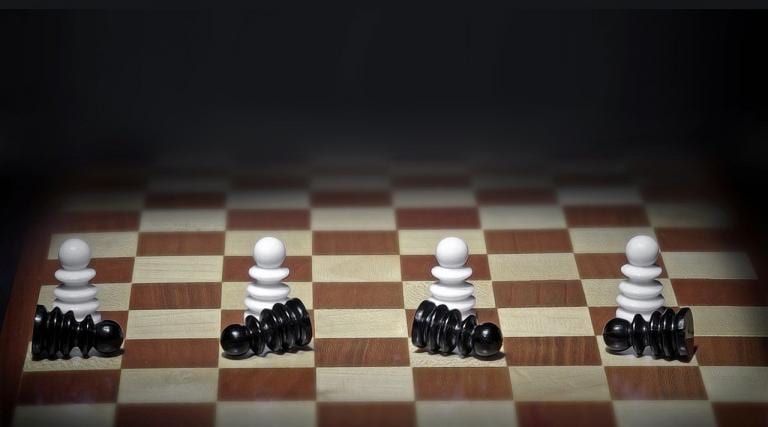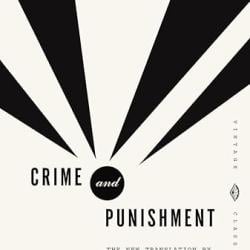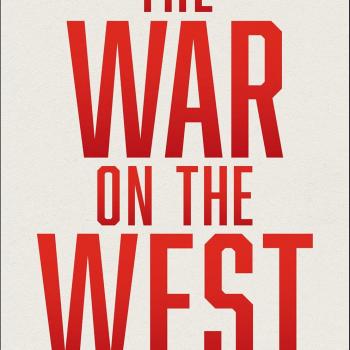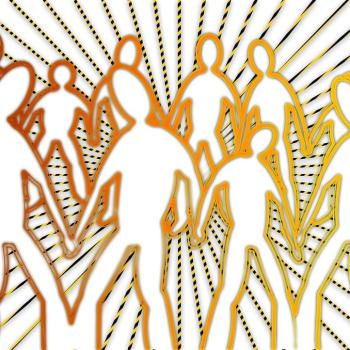Define your terms. More than 80% of our disagreements can probably be solved if we could agree on the meaning of key words. True, not all things can be defined with specificity; rather, they share a cluster of characteristics.
What about the meaning of racism? It seems like a self-explanatory term, at least until you start reading books, listening to arguments, and attempt to understand what people mean by the phrase “systemic racism.” This post identifies two common (but problematic) explanations of racism. It then proposes a third option.
Two Definitions of Racism
Let’s start with race. “Race” refers to the categorization of people according to observable, biological characteristics (e.g., skin color). That’s a pretty standard explanation that stands in contrast to “ethnicity.” While the two concepts are related, “ethnicity” refers to the categorization of people based on shared cultural background (e.g., heritage, language, traditions, etc.)
We are now ready to consider the meaning of racism. Two definitions are most common, though authors might differ in their precise wording.
-
Racism = Prejudice
The average person on the street will say that racism is prejudice against someone based on race. People will deny being racists because they don’t harbor hatred or animosity towards people of another racial group. For this reason, even some white supremacists will claim they’re not “racist” because they have nothing against the BIPOC (Black, Indigenous, People of Color) community; they merely favor whites.
This definition of racism tends to emphasize the feelings and behavior of individuals. According to this view, we stem racism by changing individual hearts.
The problem with this perspective is not that it’s incorrect; rather, it’s woefully insufficient. As we’ll see, it’s too basic and overlooks the complex nature of racism. It also ignores unconscious bias against groups based on race. Furthermore, as I explained previously, this definition undermines anti-racist efforts by its stress on individualism.
-
Racism = Prejudice + Power
A second definition pervades popular writings on racism. It suggests that racism essentially is prejudice plus power.
Robin DiAngelo, in White Fragility, says racism is a system of socialization (p. 24). He approves of David Wellman’s succinct definition of racism as “a system of advantages [or privileges] based on race” (24). She then describes racism as “a social system embedded in the culture and its institutions” (83).
Ibram Kindi, author of How to be an Antiracist, says this in an article:
There is no such thing as a “not-racist” policy, idea or person. Just an old-fashioned racist in a newfound denial. All policies, ideas and people are either being racist or antiracist. Racist policies yield racial inequity; antiracist policies yield racial equity. Racist ideas suggest racial hierarchy, antiracist ideas suggest racial equality. A racist is supporting racist policy or expressing a racist idea. An antiracist is supporting antiracist policy or expressing an antiracist idea. A racist or antiracist is not who we are, but what we are doing in the moment.
Others are even more explicit.
“Racism is different from racial prejudice, hatred, or discrimination. Racism involves one group having the power to carry out systematic discrimination through the institutional policies and practices of the society and by shaping the cultural beliefs and values that support those racist policies and practices.”
These definitions have in common an emphasis on social or institutional power. They specifically underscore the social dimension of racism. None of us are mere individuals; we are socialized beings who live in groups.
The Problems with “Racism”
The advantage of the second definition is that it takes seriously the power of collective identity. It seeks to combat racism by addressing past racist practices that continue to have present consequences. So, advocates of the second view want to correct policies that perpetuate racial injustice, even if the people implementing those policies have no idea they are preventing racial equity.
However, supporters of the second definition are too often influenced by critical theory, which divides the world into two basic groups––the oppressed and the privileged oppressor. Accordingly, they tend to accept several flawed ideas.
For example, one gets the impression that everything stems from this simple logic: Oppression is bad. Therefore, power is bad.
Those in power are generally branded as “oppressors.” They usually fail to distinguish having power from the use of power. Having power itself does not make one racist. Power is neutral. It’s what we do with power that matters.
Similarly, these writers rarely distinguish results from intent or purpose. So, one might unknowingly perpetuate past racist policies, but that doesn’t make the person racist. It simply means the policy is racist. The debate becomes which policies are racist or create insurmountable inequality. No one is omniscient. A person might design a policy to address racial discrimination, yet it might (unwittingly) create more racial inequality. If we insist on calling the person a racist (not the policy), the entire conversation goes off track.
A better option?
I suggest a third option that (I hope) accounts for the limitations of the above definitions.
Racism is…
the conscious or unconscious discrimination or prejudice against people based on race.
At first, this simple statement seems identical to the first definition. Three slight alterations are noteworthy. First, it speaks about “prejudice against…” After all, prejudice is a vague phrase. We all show prejudice to someone (like family). Second, this definition includes both prejudice as well as discrimination. The former is about one’s personal opinion or judgment; the latter concerns actions.
The third and most important addition is the phrase “or unconscious.” Advocates of the second definition want to address the implicit bias that is built into social and institutional systems. Whether it be in the justice system, policing tendencies (e.g., “driving with black”), housing regulations, etc., minorities have faced tangible forms of discrimination that create immense obstacles for present-day minorities to overcome.
So, even if we imagined a country where no one had explicit prejudice against black people, it would be immensely difficult for them to attain full social and economic equality.
How else does this definition relate to systemic racism? Again, we need to clarify our terms. “Systemic racism” merely refers to the policies and normative practices that create or perpetuate discrimination or prejudice against people on the basis of race. Such “systems” are carried out by people. People establish or defend such policies. It is people who accept racist norms, which consciously or unconsciously.
Before we get to the starting line
Here’s an analogy that I found helpful (though I can’t recall where I heard it).
Imagine two black men are allowed to enter an Olympic race, which also includes white runners. However, due to various discriminatory practices in the past, the black runners do not receive the same coaching, training, and nutrition as the white runners, who have received years of professional coaching and hours of rigorous training.

What will happen when they finally start their race? On the surface, the rules of the race equally apply to all runners. They all must run the same distance and start when the gun fires. However, past inequalities (i.e., decades and centuries of discrimination) have left the black runners ill-equipped to contend seriously for the gold medal.
This analogy intends to highlight the ways that racism is built into the social order. Changing individuals’ hearts today does not mean that everything is equal for blacks as for whites.
Two scenarios are will occur when we recognize the existence of unconscious discrimination or prejudice against a race. On the one hand, a person might not knowingly do something that is, in fact, racist simply because they do not realize their biases. This phenomenon is characteristic of “colorblind racism.”
On the other hand, a person might oppose a policy that some judge as racist but does so without any unconscious attempt to discriminate against a certain race. That person might simply disagree with others about the best way to foster justice in society.
In any case, when we include unconscious bias against people based on race, we are better equipped to undo systems that created racial inequality. Furthermore, this altered definition accounts for implicit prejudice yet without confusing power as inherently bad nor collapsing purpose and result.













